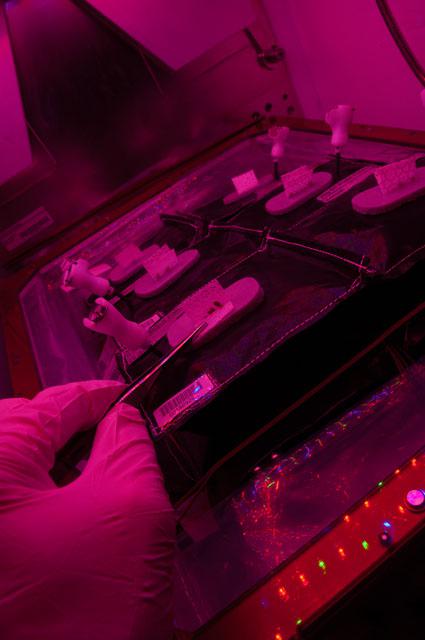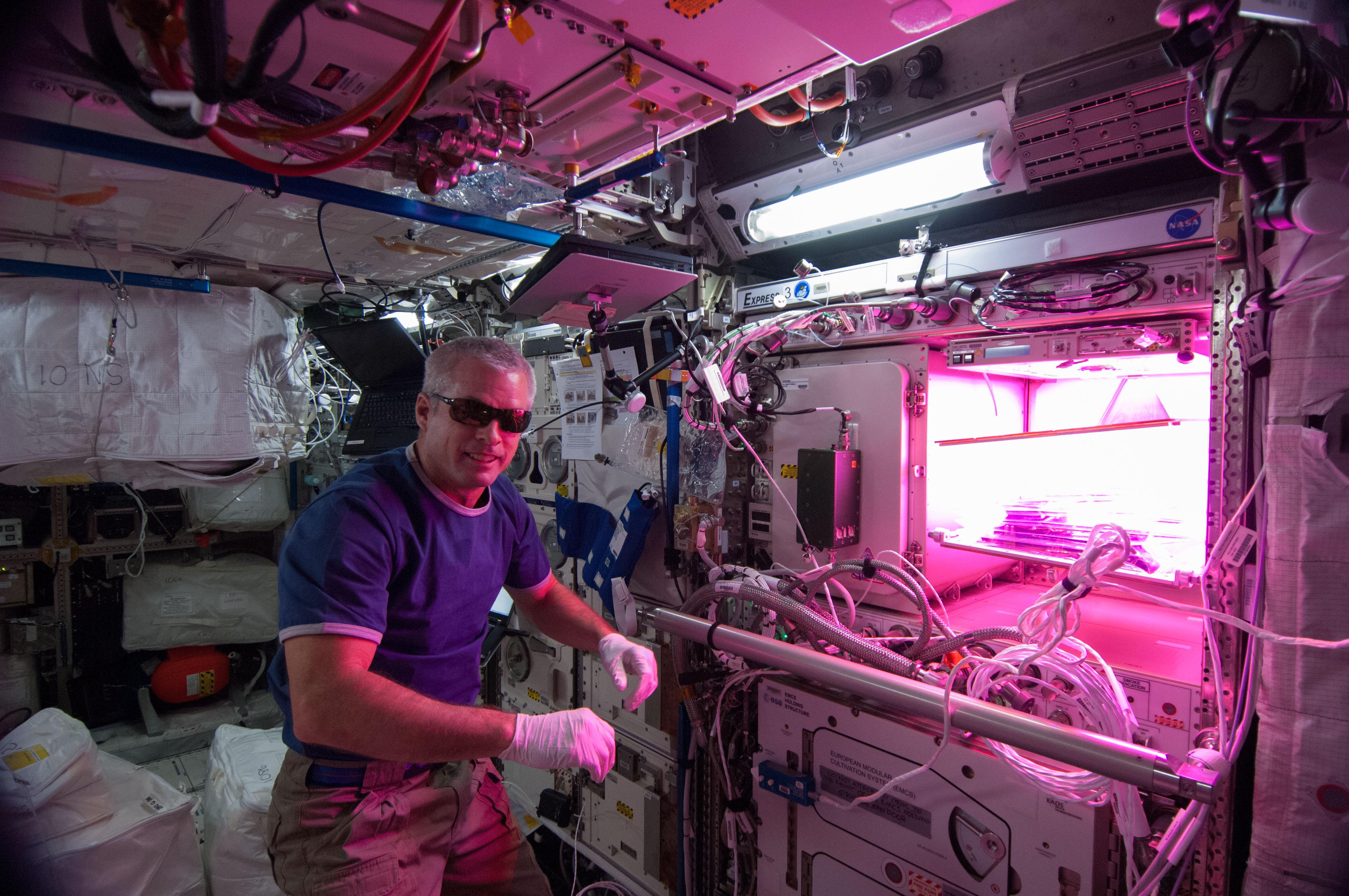This question originally appeared on Quora, the best answer to any question. Ask a question, get a great answer. Learn from experts and get insider knowledge. You can follow Quora on Twitter, Facebook, and Google Plus.
Answer by Robert Frost, trained International Space Station astronauts to operate the motion control system:
There have been numerous experiments into plant growth in space. It’s important to scientists on the ground because it can help us better understand how plants function, which can help us to grow food more efficaciously. It’s also important to NASA, because when we finally start sending astronauts away from low Earth orbit, they may need to grow their own food and maintain their own regenerable atmosphere.
Gravity is not the only difference between the Earth environment and the International Space Station environment. In the closed atmosphere of a spacecraft, volatile organic compounds can accumulate. VOCs need to be scrubbed from the air, or seed production will suffer. There are elevated radiation levels that can cause mutations and affect growth. An experiment on Mir that involved storing tomato seeds in space for six years found mutation rates up to 20 times higher in the space seeds than in the control seeds stored on the ground. And there are the spectral effects of using only electric lighting.
Because plants also respire, we have to have fans to circulate the air around the plants so that they don’t suffocate on their own exhalations. Even failed experiments can provide us with better understanding. An experiment to study plant lignin failed to produce healthy plant materials but taught us more about providing effective air movement.

Courtesy of NASA
In the absence of weight, there is poor water and air movement through the rooting media. One complication we’ve discovered is that in microgravity, the water distributes evenly throughout the soil. This can actually prevent air from reaching the roots. That’s why “Veggie,” a plant growth chamber, uses small bags of soil with inserted wicks to provide water, so that water is only distributed to selected areas. (The astronauts will use Veggie to grow foods. Here’s a video explaining the experiment. The plan is to return early Veggie crops to Earth for further study.) It’s also why a lot of study has gone into selecting the best soils. Fine-grained soils hold too much water and coarse soils hold too much air.
Tropism is a growth response between a plant and an external stimulus. There are numerous forms of tropism, and understanding each of them greatly affects our abilities to grow healthy plants. One of the cool things about experimenting on the ISS is that we can study each form of tropism in isolation. On Earth, gravity tends to overwhelm the other influences.
Gravitropism is when the external stimulus is gravity. Plants have a hormone called auxin. In a gravity environment, if a plant is oriented on its side, auxin will accumulate in the stem and stimulate cell expansion that will result in the stem bending to point upward so that the stem grows toward light (the sun). Similarly, auxin prevents cell elongation in the roots and that encourages roots to grow downward.
When plants grow, they do so in an oscillatory or helical manner called circumnutation. We can easily see this in vines that grow around an object. An interesting experiment was done aboard the ISS to study this in the absence and presence of gravity in the space environment. Arabidopsis plants were grown from seeds in space and observed both in the normal microgravity environment and in a centrifuge that simulated 0.8G. While under the 0.8G, the plants experienced circumnutation amplitudes five to 10 times as high as in microgravity. Within the endodermis of the planet there are gravisensing cells. On a larger scale, this may mean that vines cannot twine in space.
An interesting thing learned from studying cucumber growth in space involves a structure called a peg that develops immediately after germination, between the root and stem. This peg has long been observed, and the scientists were interested to see if it was dependent on gravity. What they learned was that each seed is structured to grow two pegs—one on each side—but in the presence of gravity, only one peg develops, whereas both are activated in microgravity.
Studies indicate that a plant’s perception of gravity is related to the presence of starch in the organelles within the cell structure of the roots. Roots with starch appear to be more sensitive to gravity that roots that are missing the starch.
Hydrotropism is when the external stimulus is water. Cucumber plants are particularly dependent on gravity to initiate growth. An experiment called Hyrop Tropi was conducted in the Japanese laboratory aboard ISS in 2010. The experiment was designed to investigate two major objectives: One was to see if roots of cucumber seedlings would bend toward water when they grow in microgravity, and the other was to identify auxin-regulated genes. This was a neat example of an experiment that needed microgravity. It would be difficult to study the role of water on Earth, because we can’t easily remove the effects of gravity, but in space we could ensure that water was the only stimulus. From the principal investigator:
The results showed that roots hydrotropically bent toward the moistened plastic foam under microgravity conditions, whereas they grew straight along the direction of gravitational force under 1G conditions. The hydrotropic response in microgravity appeared to be greater in the NaCl chamber compared with that in H2O chamber, but they did not differ statistically. Furthermore, CsIAA1 gene differentially expressed in the hydrotropically bending roots; the expression was much greater on the concave side than on the convex side. On the other hand, no asymmetric expression of CsIAA1 in the roots grown under 1G conditions were detected. These results revealed that roots become very sensitive to moisture gradients in microgravity and that auxin redistribution and differential auxin response take place during hydrotropic response. Also, the results imply that the hydrotropic response can be used as a means of root growth regulation for plant production in space.
Phototropism is when the external stimulus is light. In some of the pictures from space, you’ll notice that the lighting is red-blue in the plant habitat. Red-blue light that has been deemed most efficacious for photosynthesis.
Other tropisms that can be studied are chemotropism (chemicals), thigmotropism (touch), and electrotropism (electric fields).
More questions on Quora:
